When we think of climate change, images of melting ice caps and rising sea levels often come to mind. But beneath the waves of False Bay, South Africa. The story is unfolding in ways that are harder to spot. Unless you are like us, and spend a lot of time in a wetsuit. Down here, the signs aren’t towering glaciers collapsing into the sea, but subtle shifts in water temperature, the quiet arrival of new species, and the slow retreat of familiar ones. Kelp fronds that once formed dense golden canopies are thinning in some areas, replaced by low turf algae. Sea urchins are advancing across once-thriving reefs, and warm-water fish from distant coasts are making themselves at home. These changes don’t make headlines in the same way as an iceberg breaking free, but for those who dive these waters regularly, they are just as dramatic, and they tell a story of an ecosystem in transition.
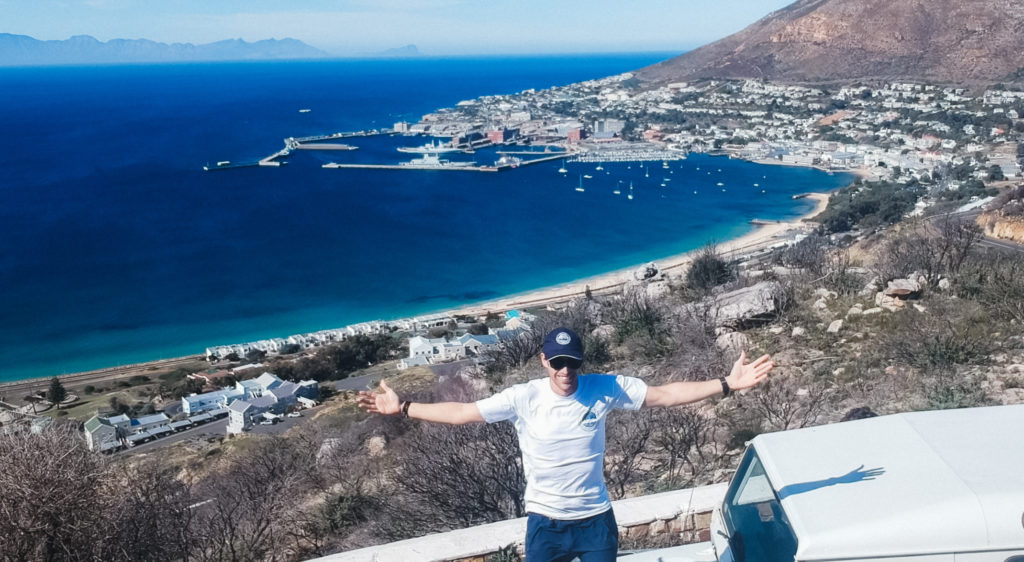
The Slow Creep of Warmer Water
Sea surface temperatures in False Bay have been rising over the past few decades. Even slight changes, around 1 – 2°C, can affect which species thrive. Warmer waters may attract species that were once uncommon or absent, while making it harder for those adapted to cooler seas to survive. Over time, this slow shift can quietly but profoundly change the balance of life in the bay. These newcomers may compete with or displace local species, reshaping community dynamics in subtle ways.
At Cape RADD, we’ve witnessed this first-hand. During a recent summer dive, our team spotted a Moorish idol, a striking black, white, and yellow tropical reef fish more at home in the warm waters of the Indian Ocean. While it was a beautiful and exciting find, it’s also a sign of changing conditions. These occasional visitors arrive on pulses of warmer water, often carried by currents from the east coast. A single sighting might not seem significant, but when such species start appearing more frequently, it’s a clear indicator that the bay’s thermal boundaries are shifting.
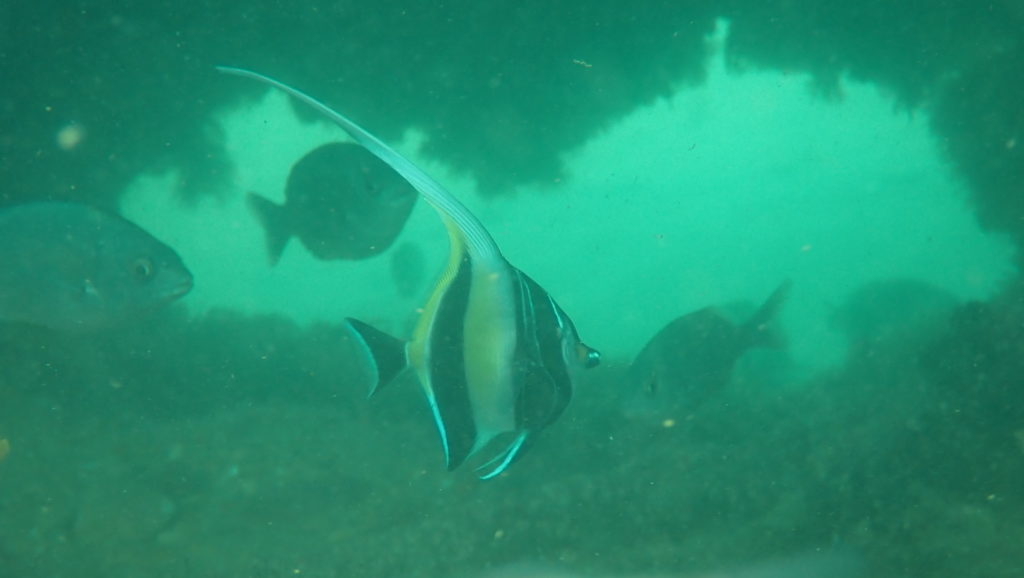
The Shuffle of Species Boundaries
Kelp forests, dominated by Sea bamboo, Ecklonia maxima, are giants of the sea that thrive in cool, nutrient-rich waters. They create a three-dimensional world beneath the waves, offering food, shelter, and hunting grounds for countless marine species. But as the bay warms, kelp growth can slow, particularly in shallow, wave-sheltered areas where water movement no longer brings enough cool, nutrient-dense water to the fronds. Over time, this can thin the once-dense canopy, reducing the shade and structure that so many animals rely on.
In the gaps left behind, turf algae, low-growing fuzzy mats of seaweed, often take hold. While they may seem harmless, turf algae dramatically change the architecture of the underwater habitat. Instead of long fronds swaying in the current, the reef becomes carpeted with short, tangled growth. This shift alters the “real estate” available for marine invertebrates, fish, and juvenile abalone, many of which depend on the vertical structure of kelp for protection from predators and foraging opportunities. What might look like a minor change in vegetation to the casual observer is, for the animals that live here, a complete rearrangement of their neighbourhood.
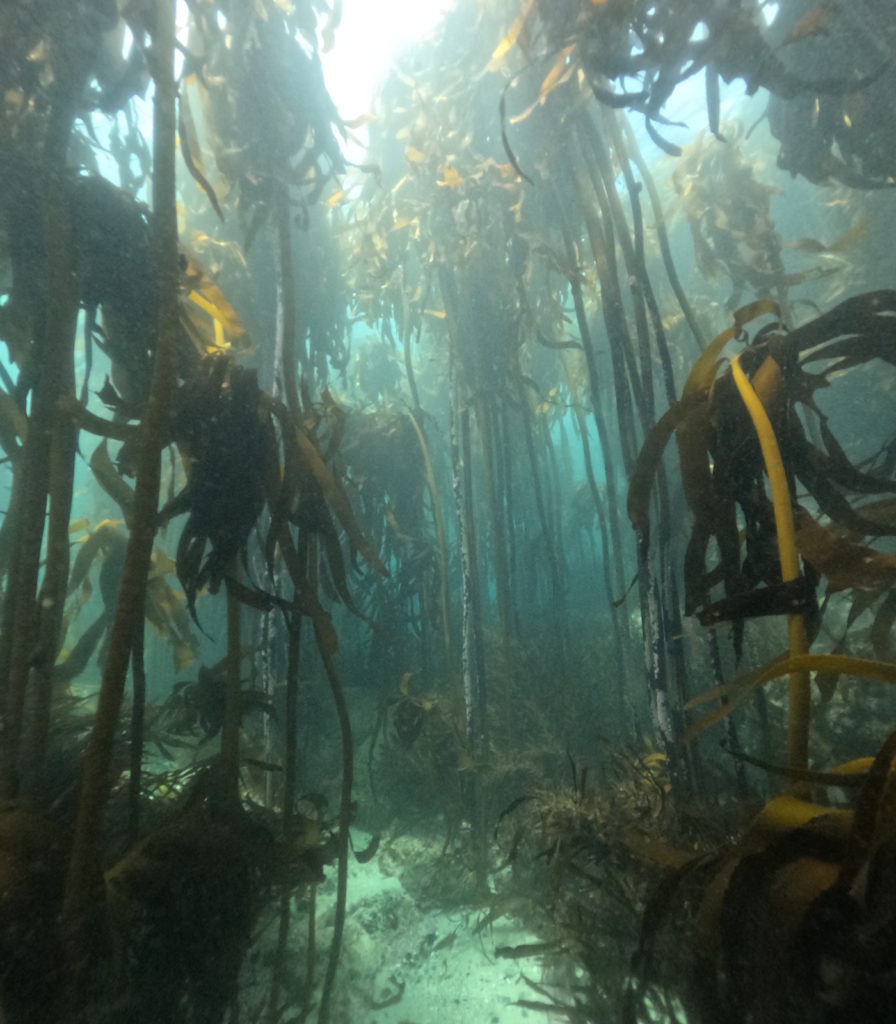

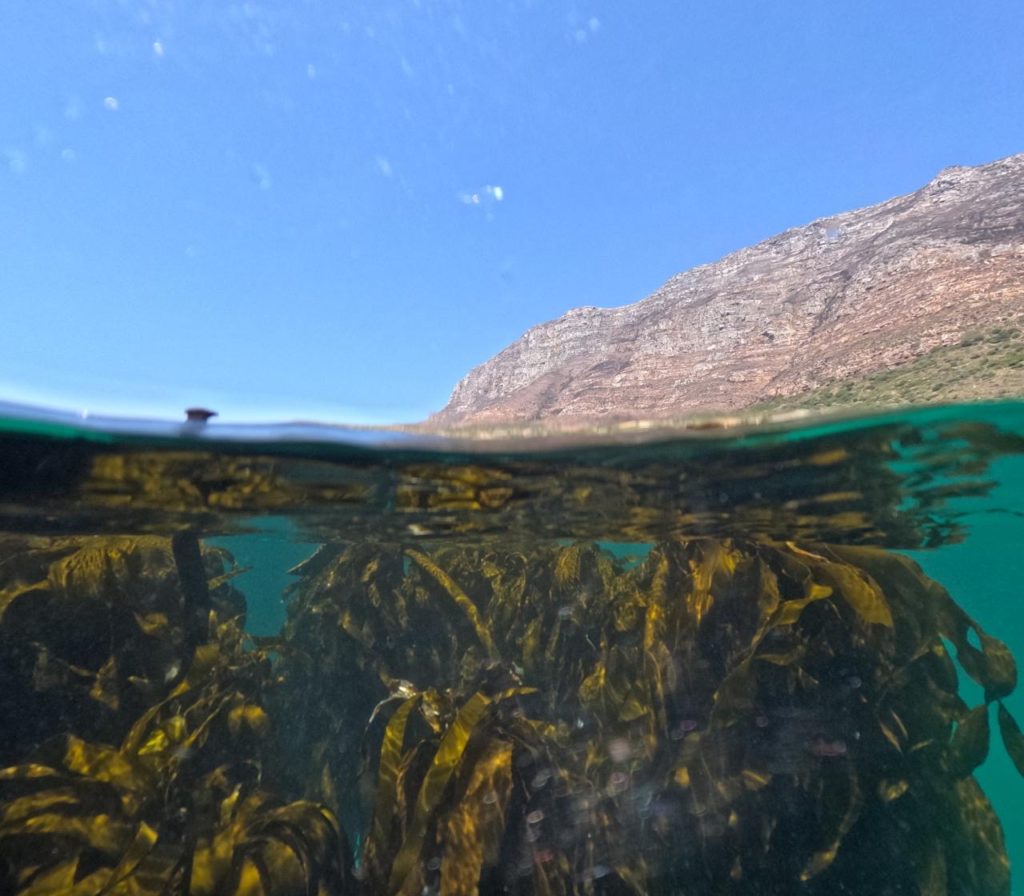
Urchin Barrens on the Rise
Adding to the problem, predators that normally keep urchin numbers in check, like rock lobsters, have declined in parts of False Bay due to a combination of fishing pressure and changing environmental conditions. Without enough predators, urchin populations could explode unchecked. During our urchin barren monitoring project, we have observed these small “urchin barrens” expanding in some of our monitored reefs. These barren sections of kelp reef are notably challenging to restore with kelp. This loss of kelp not only affects the urchins’ prey but also disrupts the entire ecosystem that depends on kelp forests for shelter and food.
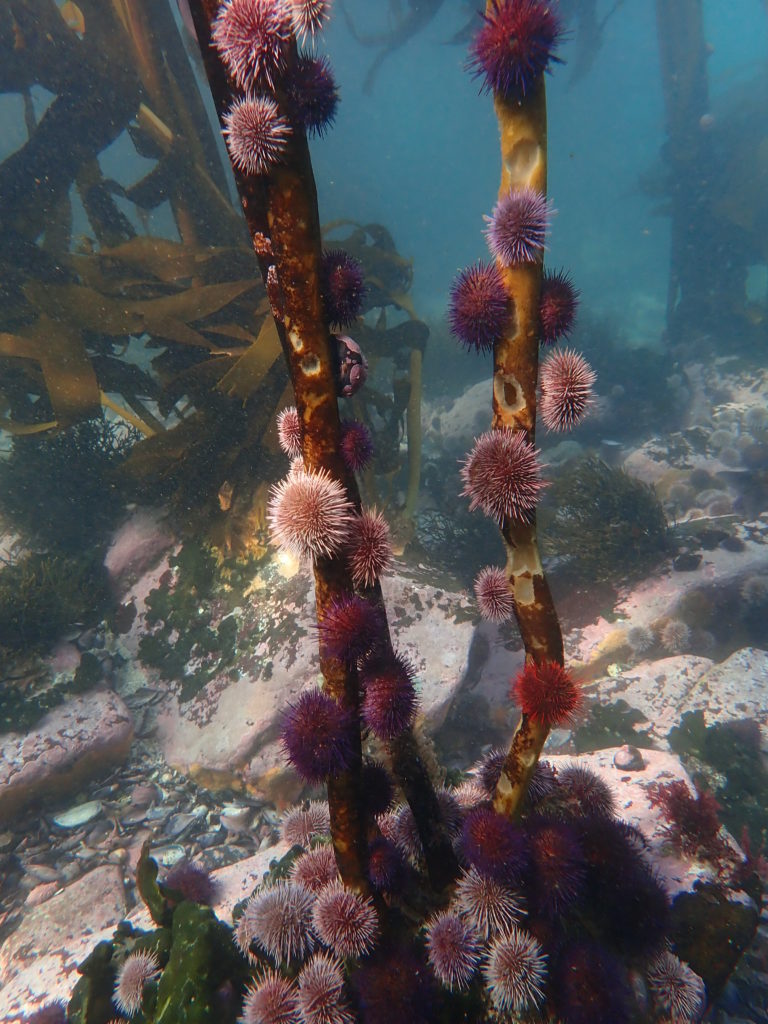
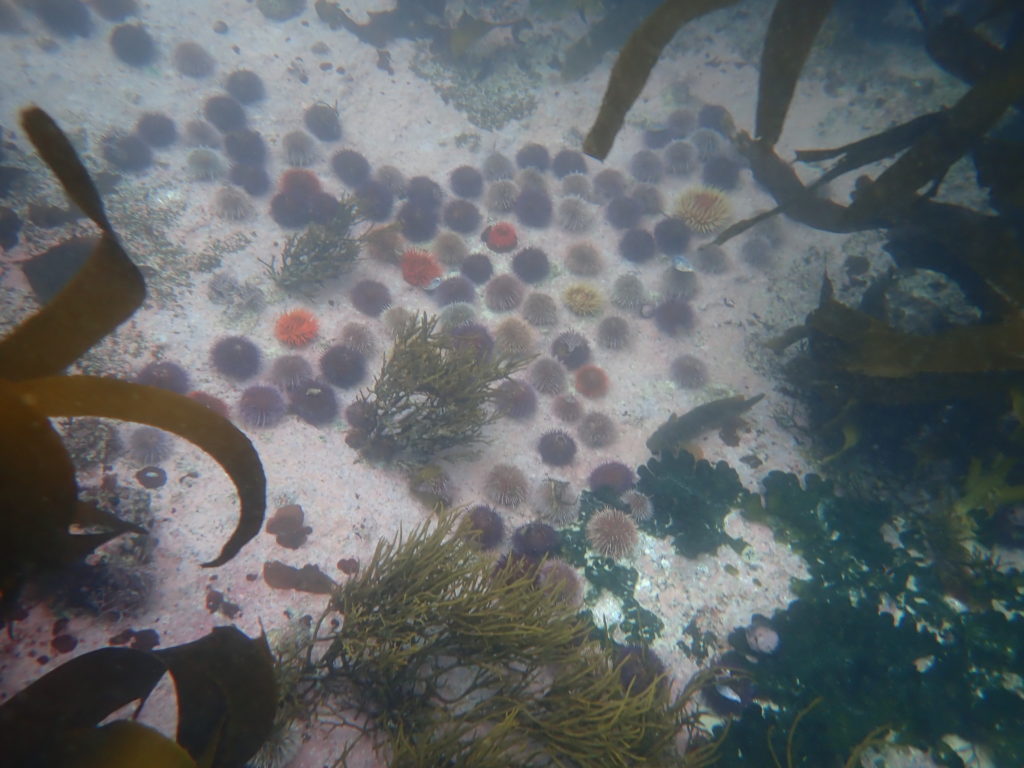
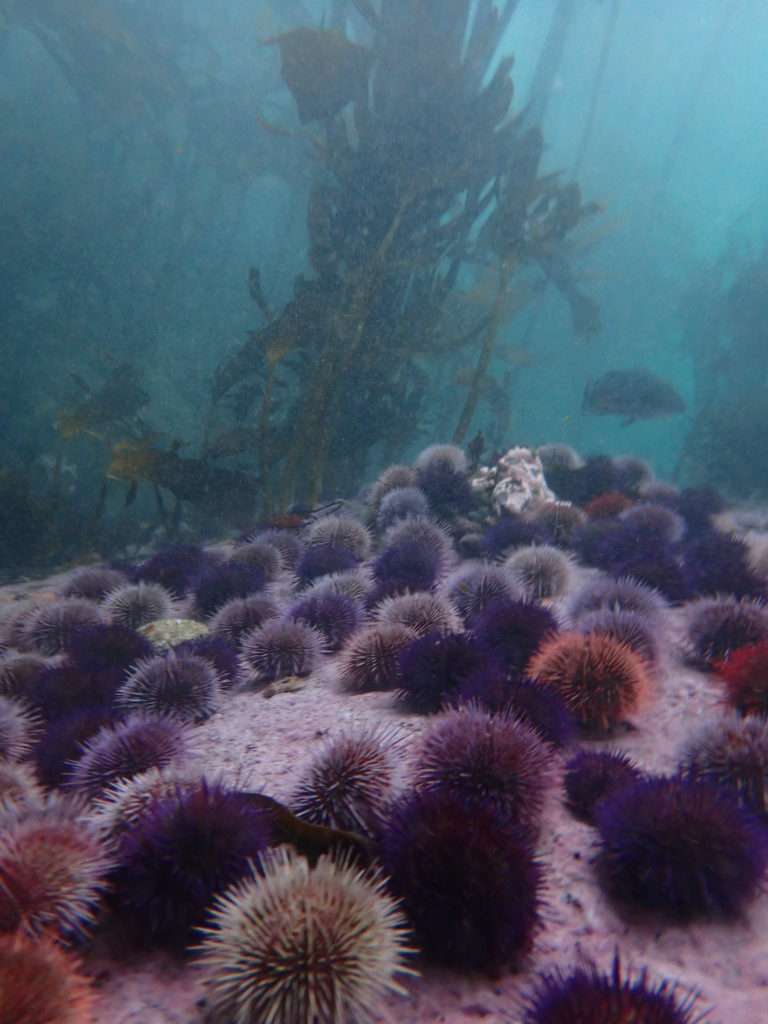
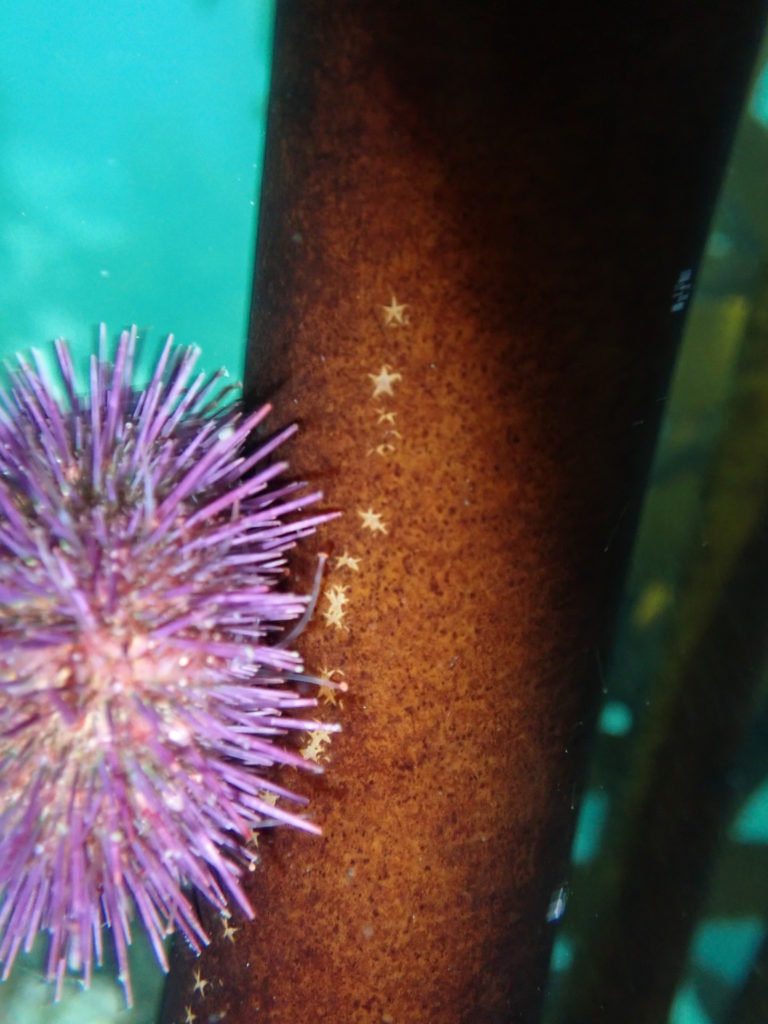
Stormier Seas, Shifted Seasons
Climate change impacts more than just sea temperatures; it also influences wind patterns, wave action, and crucial upwelling events. Upwelling is the process where deep, cold, nutrient-rich water rises to the surface, fuelling the growth of plankton, the base of the marine food web. In False Bay, this natural cycle supports the entire ecosystem, from tiny crustaceans to large predatory fish and marine mammals.
However, shifts in wind strength and direction could disrupt the timing and intensity of upwelling, leading to less predictable nutrient flows. When upwelling weakens or occurs at unusual times, plankton blooms may be smaller or mistimed, affecting the availability of food for small fish and invertebrates. This ripple effect continues up the food chain, impacting the seabirds, seals, and other charismatic wildlife that rely on a healthy and abundant marine ecosystem.
False Bay is a microcosm of change, an ecological laboratory where the fingerprints of climate change are becoming visible. By monitoring species distributions, habitat shifts, and biodiversity patterns, scientists and citizen divers can help track these changes in real time.
What You Can Do About Climate Change?
- Support and participate in marine citizen science projects. Like those we offer on our Marine Science Field course.
- Choose sustainable seafood to protect ocean predators and prey.
- Reduce your carbon footprint, because the choices we make on land ripple into the sea.
Join us in documenting False Bay’s changes. Your dives make a difference.